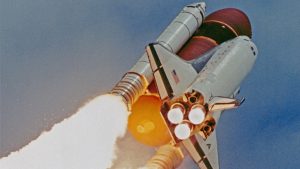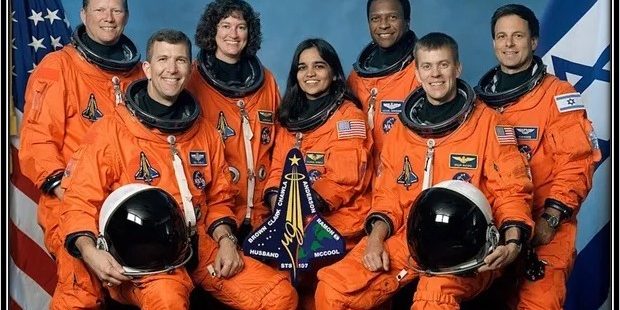Today in Aviation History: The Space Shuttle Columbia Disaster
Contributor: Barry Fetzer
Sources: History.com
“Life is a magical thing.”- Laurel Clark, astronaut and medical doctor aboard the Space Shuttle Columbia once said. Yes, it is. It is a magical thing and a blessing. We forget that sometimes in the trials and tribulations of our lives.
And on February 1, 2003, the space shuttle Columbia broke up while entering the atmosphere over Texas, ending the magical lives of all seven crew members on board.
Most of us, adults at the time, remember exactly where we were when Columbia broke apart. It was a sad day in aviation and space history.

Columbia Breaking Up. Courtesy of Britannica.
According to History.com. “The Columbia‘s 28th space mission, designated STS-107, was originally scheduled to launch on January 11, 2001, but was delayed numerous times for a variety of reasons over nearly two years. Columbia finally launched on January 16, 2003, with a crew of seven. Eighty seconds into the launch, a piece of foam insulation broke off from the shuttle’s propellant tank and hit the edge of the shuttle’s left wing.
“Cameras focused on the launch sequence revealed the foam collision but engineers could not pinpoint the location and extent of the damage. Although similar incidents had occurred on three prior shuttle launches without causing critical damage, some engineers at the space agency believed that the damage to the wing could cause a catastrophic failure. Their concerns were not addressed in the two weeks that Columbia spent in orbit because NASA management believed that even if major damage had been caused, there was little that could be done to remedy the situation.
“Columbia reentered the earth’s atmosphere on the morning of February 1. It wasn’t until 10 minutes later, at 8:53 a.m.–as the shuttle was 231,000 feet above the California coastline traveling at 23 times the speed of sound–that the first indications of trouble began. Because the heat-resistant tiles covering the left wing’s leading edge had been damaged or were missing, wind and heat entered the wing and blew it apart.

HUM Images/Universal Images Group/ GETTY IMAGES. The Space Shuttle Columbia launching on a 9-day mission.
“The first debris began falling to the ground in west Texas near Lubbock at 8:58 a.m. One minute later, the last communication from the crew was heard, and at 9 a.m. the shuttle disintegrated over northeast Texas, near Dallas. Residents in the area heard a loud boom and saw streaks of smoke in the sky. Debris and the remains of the crew were found in more than 2,000 locations across East Texas, Arkansas and Louisiana. Making the tragedy even worse, two pilots aboard a search helicopter were killed in a crash while looking for debris. Strangely, worms that the crew had used in a study that were stored in a canister aboard the Columbia did survive.

From left to right: STS-107 crew members David M. Brown, Rick Husband, Laurel Clark, Kalpana Chawla, Michael Anderson, William “Willie” McCool, and Ilan Ramon. Courtesy of NASA.
“In August 2003, an investigation board issued a report that revealed that it in fact would have been possible either for the Columbia crew to repair the damage to the wing or for the crew to be rescued from the shuttle. The Columbia could have stayed in orbit until February 15 and the already planned launch of the shuttle Atlantis could have been moved up as early as February 10, leaving a short window for repairing the wing or getting the crew off of the Columbia.
“In the aftermath of the Columbia disaster, the space shuttle program was grounded until July 16, 2005, when the space shuttle Discovery was put into orbit.”







